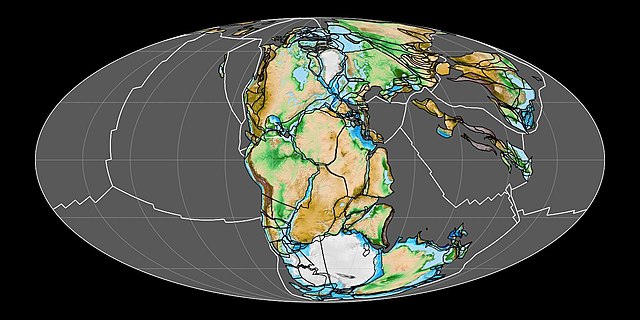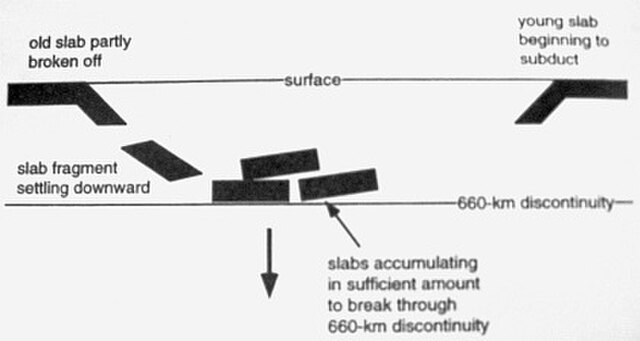Pangaea or Pangea was a supercontinent that existed during the late Paleozoic and early Mesozoic eras. It assembled from the earlier continental units of Gondwana, Euramerica and Siberia during the Carboniferous approximately 335 million years ago, and began to break apart about 200 million years ago, at the end of the Triassic and beginning of the Jurassic. In contrast to the present Earth and its distribution of continental mass, Pangaea was C-shaped, with the bulk of its mass stretching between Earth's northern and southern polar regions and surrounded by the superocean Panthalassa and the Paleo-Tethys and subsequent Tethys Oceans. Pangaea is the most recent supercontinent to have existed and the first to be reconstructed by geologists.
The supercontinent Pangaea in the early Mesozoic (at 200 Ma)
Alfred Wegener c. 1924–1930
Appalachian orogeny
Dicroidium zuberi, an Early Triassic plant from Pangaea (present-day Argentina)
In geology, a supercontinent is the assembly of most or all of Earth's continental blocks or cratons to form a single large landmass. However, some geologists use a different definition, "a grouping of formerly dispersed continents", which leaves room for interpretation and is easier to apply to Precambrian times. To separate supercontinents from other groupings, a limit has been proposed in which a continent must include at least about 75% of the continental crust then in existence in order to qualify as a supercontinent.
As the slab is subducted into the mantle, the more dense material will break off and sink to the lower mantle creating a discontinuity elsewhere known as a slab avalanche
The effects of mantle plumes possibly caused by slab avalanches elsewhere in the lower mantle on the breakup and assembly of supercontinents
U–Pb ages of 5,246 concordant detrital zircons from 40 of Earth's major rivers







